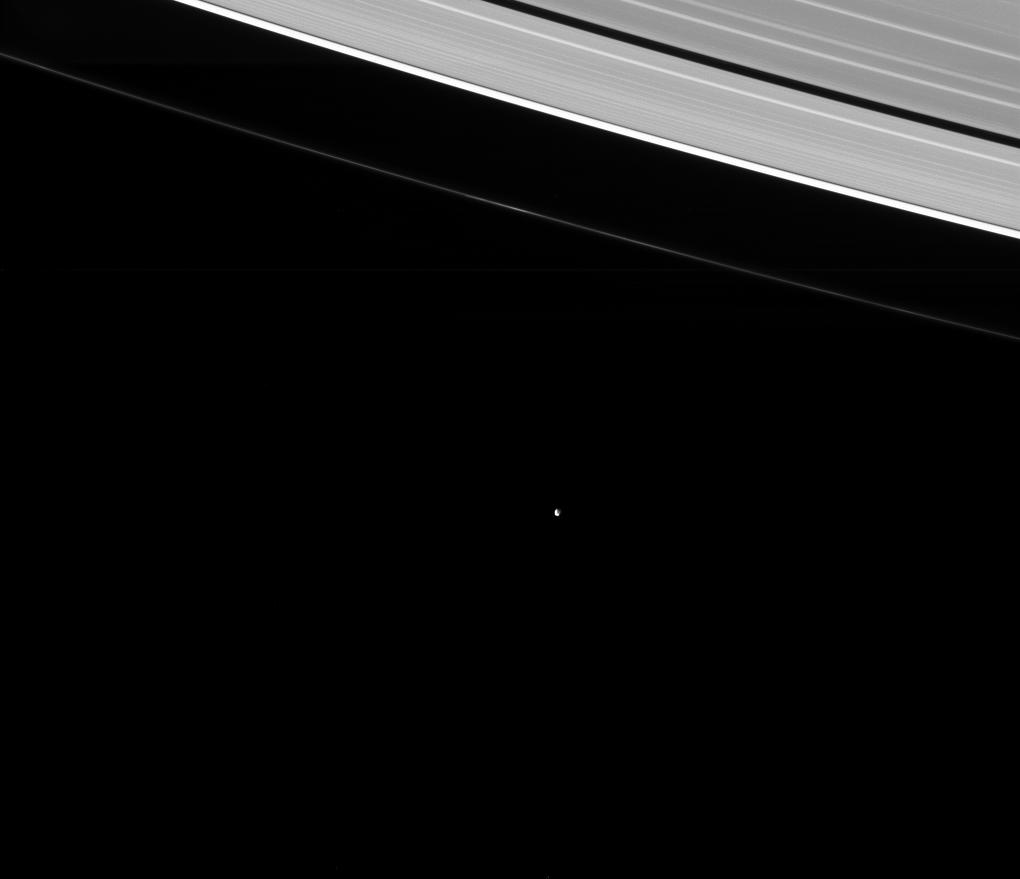20-20 Hindsight

| PIA Number | PIA18305 |
|---|---|
| Language |
|
Much as its name implies, tiny Epimetheus (Greek for hindsight) was discovered in hindsight. Astronomers originally thought that Janus and Epithemeus were the same object. Only later did astronomers realize that there are in fact two bodies sharing the same orbit!
Janus (111 miles or 179 kilometers across) and Epimetheus (70 miles or 113 kilometers) have the same average distance from Saturn, but they take turns being a little closer or a little farther from Saturn, swapping positions approximately every 4 years. See Janus-Epimetheus Swing for more.
This view looks toward the sunlit side of the rings from about 29 degrees above the ringplane. The image was taken in visible light with the Cassini spacecraft narrow-angle camera on Jan. 1, 2015.
The view was acquired at a distance of approximately 1.8 million miles (2.9 million kilometers) from Epimetheus and at a Sun-Epimetheus-spacecraft, or phase, angle of 89 degrees. Image scale is 11 miles (17 kilometers) per pixel.
The Cassini mission is a cooperative project of NASA, the European Space Agency and the Italian Space Agency. The Jet Propulsion Laboratory, a division of the California Institute of Technology in Pasadena, manages the mission for NASA's Science Mission Directorate, Washington, D.C. The Cassini orbiter and its two onboard cameras were designed, developed and assembled at JPL. The imaging operations center is based at the Space Science Institute in Boulder, Colo.
For more information about the Cassini-Huygens mission visit http://saturn.jpl.nasa.gov or http://www.nasa.gov/cassini . The Cassini imaging team homepage is at http://ciclops.org .
Credit: NASA/JPL-Caltech/Space Science Institute
